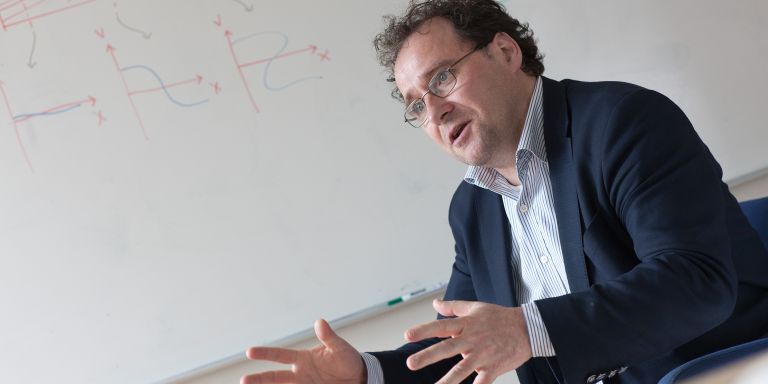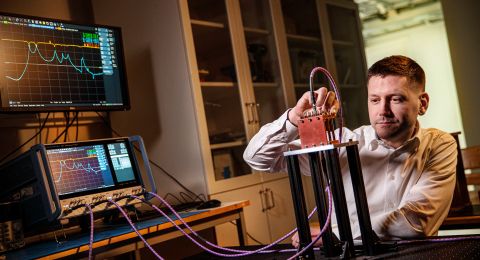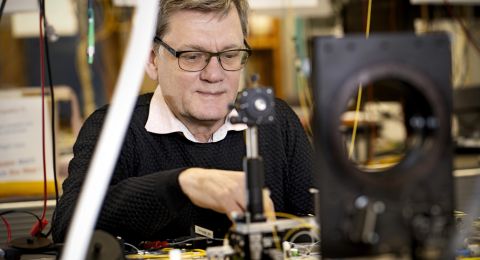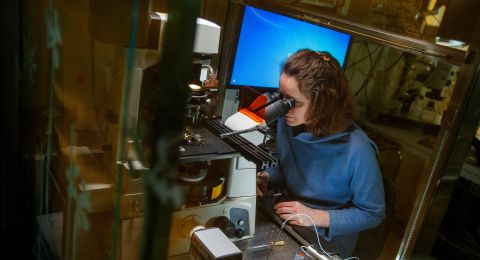
Project Grant 2014
Bottlenecks for particle growth in turbulent aerosols
Principal investigator:
Professor Bernhard Mehlig, Professor of Complex Systems
Co-investigators:
University of Gothenburg
Stellan Östlund
Nordic Institute of Theoretical Physics, Nordita
Axel Brandenburg
Lund University
Anders Johansen
Max-Planck-Institut für Dynamik und Selbstorganisation, Göttingen
Ebernhard Bodenschatz
Institution:
University of Gothenburg
Grant in SEK:
SEK 33 million over five years
Dark clouds gather outside the window – a fitting backdrop for a discussion of raindrops. But the research that Bernhard is leading is not about the rain we seen on an average Monday in Gothenburg; it is about the process whereby the tiny droplets of liquid in the clouds grow in size.
“We want to understand and describe the size distribution of these droplets that are thrown around in a turbulent environment such as a cloud or in the dust around a star. We want to use this to create a model capable of explaining the first stage of rain, and how planets are formed,” Bernhard explains. He is a physicist, and Professor of Complex Systems.
This research has a bearing on basic research into turbulence, and weather and climate research. This is because the size distribution of droplets determines how clouds absorb and reflect the sun’s rays, which in turn affects our climate on Earth. Bernhard believes that the size distribution of rain droplets is a major uncertainty factor in current climate models.
“The form in which water occurs in the atmosphere plays a central part in climate dynamics. Before they begin growing in the cloud, droplets are just a few micrometers across. But current climate models use a minimum scale of kilometers. We must break this down to gain a better idea of the interaction taking place between air and particles in the turbulence, and when various parameters change, for instance if it gets hotter or colder.”
Theory for the whole process
Bernhard explains that turbulence is a phenomenon that may be described as large circular movements that break down into smaller and smaller vortices. In clouds, the very smallest vortices are only about one millimeter in size.
“Our challenge is to show how many droplets of different sizes move together in the turbulence, how they collide with each other, and grow.”
Yet, there is no theory that describes the whole process in which particles grow from their smallest to their largest sizes. In order to formulate such a theory, the process must be broken down into smaller subproblems. Just over ten years ago, Bernhard and Michael Wilkinson, a British physicist, developed a model describing how often and how quickly droplets may collide.
“The great challenge now is to piece together what we did then with reality, which is much more complicated than our simple models.”
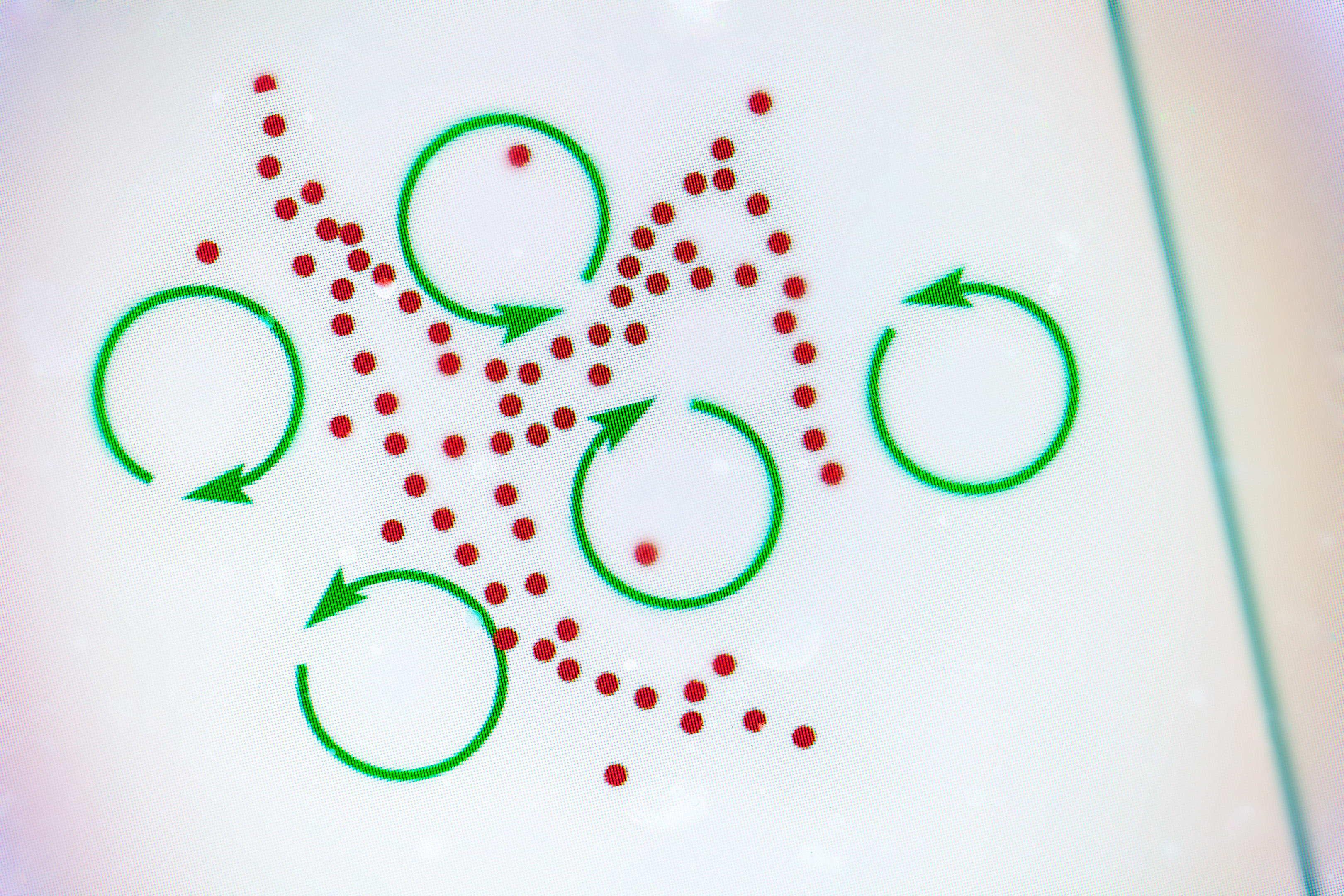
Simplified model
Under the project, which is being funded by the Knut and Alice Wallenberg Foundation, Bernhard is developing the model further, and testing it experimentally with a handful of highly qualified researchers. Bernhard points out that the scientific challenge is to piece together the solutions to the various subproblems.
“We have to simplify our statistical computations are much as we possibly can without losing the important mechanisms. And we will only know if we have succeeded if we compare with data simulations and experiments.”
At the University of Gothenburg Bernhard is being assisted by his colleagues Stellan Östlund, who is working on the statistics behind the model, and Dag Hanstorp, who has built optical traps in which individual droplets can be captured to study how they grow larger.
The model they are developing can also be used in research into how planets are formed from tiny particles of dust. For this reason, two world-leading astrophysicists are involved in the project. Axel Brandenburg comes from Nordita, and Anders Johansen, who is also a Wallenberg Academy Fellow, from Lund University.
“Now we want to put our statistical models and experiments together with Axel’s data simulations and Anders’ theories. We also intend to seek collaboration with fellow researchers at the Department of Meteorology at Stockholm University to ensure that we are on the right track – so that we really produce something that is of use to them,” says Bernhard.
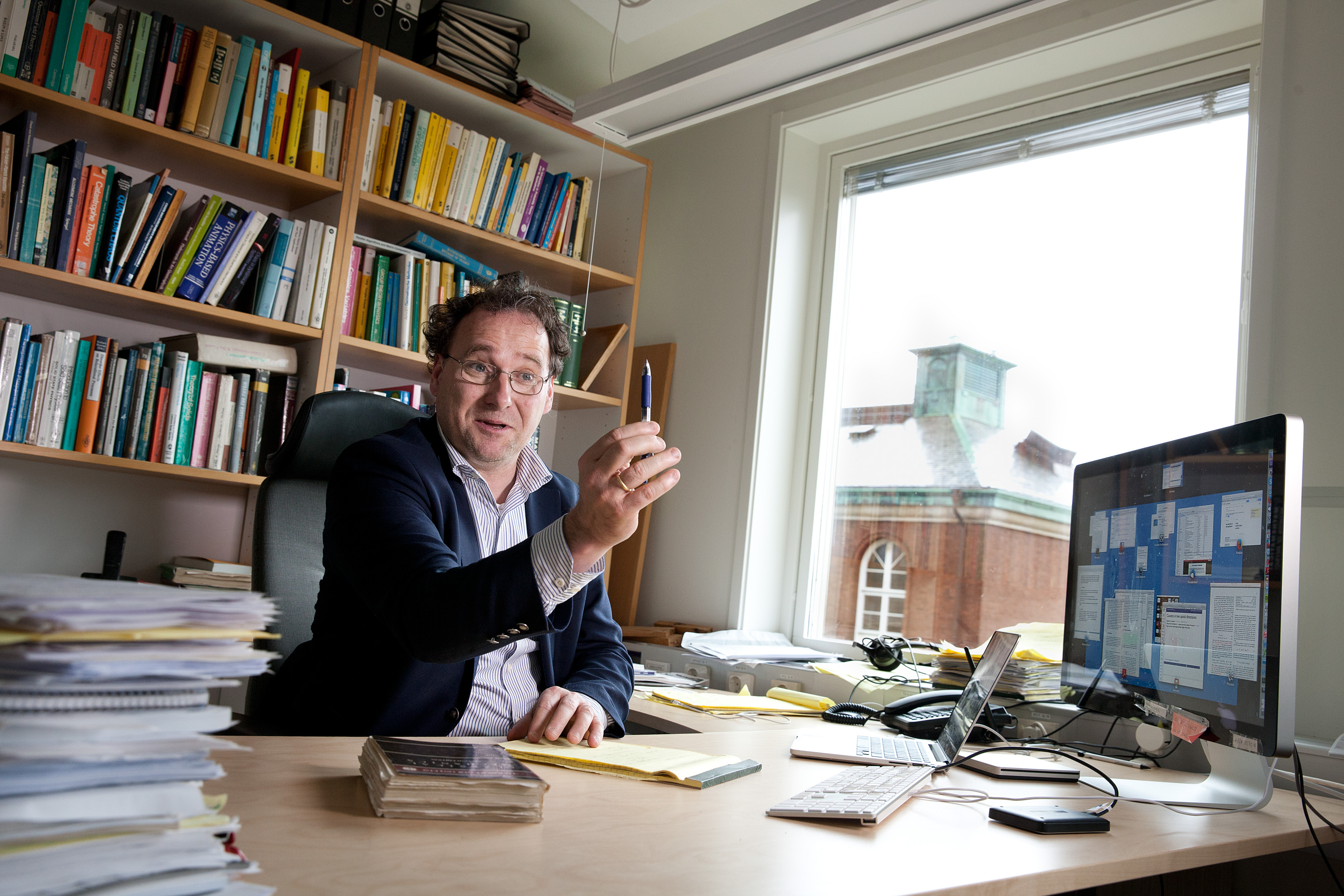
Droplets in Plexiglas
A German researcher, Eberhard Bodenschatz (director of the Max Planck Institute for Dynamics and Self-Organization in Göttingen) is also on the team.
Bernhard’s face lights up as he talks about the lab in Göttingen.
“It’s fantastic. They have a large Plexiglas ball, maybe one and a half meters in diameter. Loudspeakers produce noise, which in turn creates turbulence, and there is a small rotating disc that disperses droplets that move around in the turbulence. Extremely high resolution cameras are then used to record the movements of the particles.”
Everyone involved has so far been working on their own part of the project, but an overall picture can only be obtained by working together.
“The grant has made all this possible, for which we are very grateful. Even if we are unable to solve the size distribution riddle, we will obtain results along the way that will be of great benefit to fellow researchers, for example in the field of meteorology.”
Text Susanne Rosén
Translation Maxwell Arding
Photo Magnus Bergström
Facts: aerosols
Aerosols are small solid particles or droplets of liquid mixed with air or another medium.
Examples of aerosols are clouds, dust around a star, smoke from a smokestack, a cloud of ash from a volcanic eruption, the medicine in an asthma inhaler, spray paint and air pollutants in exhaust fumes.
